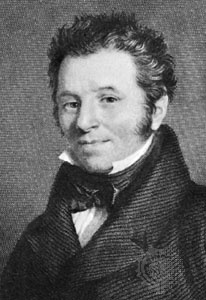Hall, Marshall
British physiologist
born Feb. 18, 1790, Basford, Nottinghamshire, Eng.
died Aug. 11, 1857, Brighton, East Sussex
 English physiologist who was the first to advance a scientific explanation of reflex action.
English physiologist who was the first to advance a scientific explanation of reflex action.While maintaining a highly successful private medical practice in London (1826–53), Hall conducted physiological research that gained him renown on the European continent and derision from established medical organizations in England. He denounced the practice of bloodletting in Observations on Blood-Letting (1830). In his Experimental Essay on the Circulation of the Blood (1831), he was the first to show that the capillaries bring the blood into contact with the tissues.
Hall's discovery that a headless newt moves when its skin is pricked led to a series of experiments that he summarized in his paper entitled “On the Functions of the Medulla Oblongata and Medulla Spinalis, and on the Excito-motory System of Nerves” (1837). This research served as the basis for his theory of reflex action, which stated that the spinal cord consists of a chain of units and that each of these units functions as an independent reflex arc; that the function of each arc arises from the activity of sensory and motor nerves and the segment of the spinal cord from which these nerves originate; and that the arcs are interconnected, interacting with one another and the brain to produce coordinated movement.
The Royal Society refused to publish the paper and several others on the subject, denouncing the theory as absurd. Yet the acclaim Hall's work received on the European continent led to studies that demonstrated the validity of his ideas. He also introduced (1855) a method of artificial respiration that was widely applied in cases of drowning.
- Revelation to John
- Revell, Viljo
- Revels, Hiram R
- Revels, Master of the
- Revelstoke
- revenge tragedy
- Reventlow, Christian Ditlev Frederik, Greve (count)
- revenue bond
- revenue sharing
- reverberatory furnace
- Reverdy Johnson
- Reverdy, Pierre
- Revere
- reverend
- Revere, Paul
- reversibility
- reversion
- Revillagigedo Islands
- revisionism
- revitalization movement
- Revius, Jacobus
- revivalism
- Revolt of the Ciompi
- revolution
- Revolutionary Tribunal